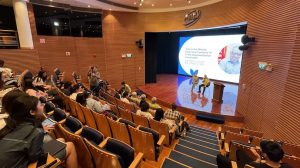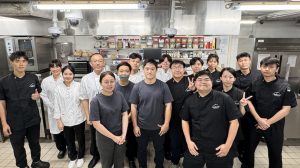Research supported by the National Natural Science Foundation of China, and involving a scholar from UTM, examines the aesthetic aspects of service in the hospitality sector
A study involving a scholar from UTM suggests that themed resorts in Macao – such as The Venetian Macao or The Parisian Macao – should explore innovative ways to replicate and recreate more extensively the atmosphere and ambience of the actual cities that inspire them.
“Given that contemporary aesthetic design can blur the boundary between authenticity and replication, property designers can think of more innovative ways to manifest a deliberate imitation of the real world,” wrote the team of researchers. “Operators could take a step further to include hedonic facilities in the property such as entertainment and live performances that could bring patrons surprise and joy.”
“For instance, apart from having a unique theme to conjure an image of a place – e.g., The Venetian Macao resembles Venice –, there could be some themed restaurants that incorporate and showcase the living cultures and elements” of the destination being replicated, it was suggested.
UTM’s Prof. Penny Wan Yim King participated in the research, along with former UTM scholar Prof. Anthony Wong Ip Kin – now associated with the University of Macau – and Ms. Danni Sun, a postgraduate student at the School of Tourism Management at Sun Yat-sen University, Zhuhai Campus, in neighbouring Guangdong Province.
The study, funded by the National Natural Science Foundation of China, resulted in the academic paper “Understanding hospitality service aesthetics through the lens of aesthetic theory”, published last year in the Journal of Hospitality Marketing & Management. (Click here for access to full paper.)
The research took a qualitative approach – involving in-depth interviews with 55 tourists – to explore hospitality service elements that are aesthetically appealing to customers. The authors selected a number of large-scale integrated resorts and smaller-scale hotels in Macao as research contexts.
Interviewees were selected based on two criteria. The first was that they needed to be above 18 years old. The second was that they should have recently experienced hospitality services from the Macao properties selected by the authors.
The research findings pointed to a total of 25 major aesthetic attributes involved in hospitality service, divided into 14 categories. The categories ranged from how the facilities looked to the appeal of colours used on site, to employee appearance. Other elements included whether the blend of all aesthetic elements involved in the service delivery was coherently displayed and understood.
Appearance counts
The research suggested that hospitality operators should recognise the aesthetic value attributed by patrons to services provided. Businesses should therefore invest in advancing the aesthetic dimension of their services.
For instance, the researchers proposed the use of advanced technologies for that purpose, including extended reality and even the metaverse, “to turn an ordinary building into an audiovisually rich adventure”.
One example provided was the use of advanced technology and other performance apparatus by resort operator Wynn Macau Ltd to turn “an ordinary fountain into a renowned spectacle and must-see attraction” – a reference to the “dancing” fountains at the firm’s Macao properties, Wynn Macau on the peninsula, and Wynn Cotai in the Cotai district.
The researchers also highlighted that, as aesthetic appeal and traits of employees contribute to customers’ evaluation of the beauty of hospitality services, “artificial intelligence could be used to evaluate employees’ aesthetic attributes and offer evaluations and suggestions that can improve their beauty scores.” In this regard, the scholars recalled that prior studies had revealed that customers pay more attention to the non-verbal behaviour of the service employees – such as smiles and body posture – than what employees say in settings such as a service encounter.
Other important aesthetic elements mentioned in the study, in terms of hospitality service, included the notion of ‘grandiosity’. “Grandiose design style and elements should be utilised in the internal decoration and external appearance of hospitality services as much as possible,” the team of researchers suggested.
They however cautioned that designers “should also pay attention to the effects of the surrounding environment” on their properties. “It is essential to assess the effects of the nearby environment on hospitality developments, and conversely, the potential negative effects of resorts on the nearby residential neighbourhoods.”
Editor: UTM Public Relations Team









